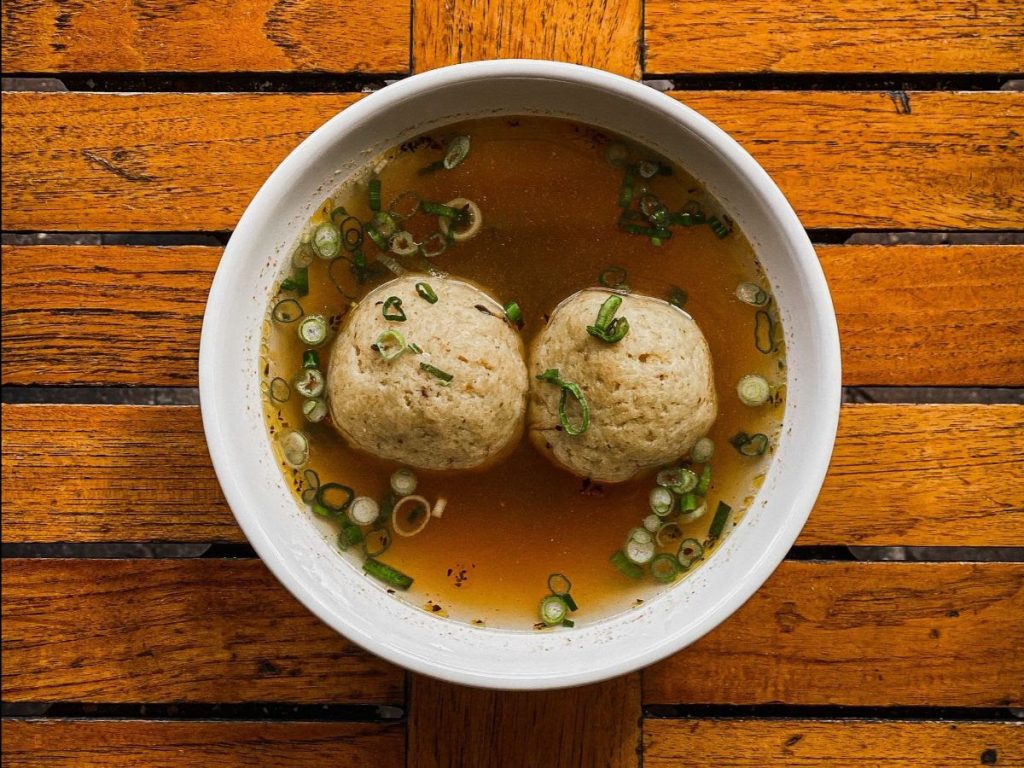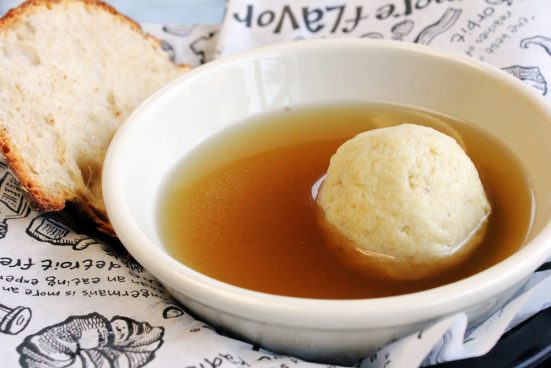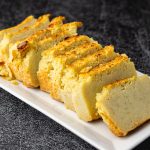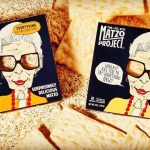Excerpt from Ari’s Top 5 enews
A prerequisite at many American Ashkenazi Passover meals

For many Americans, April is the start of baseball season. For many American Jews, it’s also the opening of matzo ball season. Instead of nine innings, we get eight nights. And where baseball fans can be consumed by statistics, trades, and home runs, we go home, sit down at the table, and consume large quantities of matzo ball soup.
Whether you’re making your own, buying a bunch from the Deli, or coming by the Roadhouse to order some in Creole Matzo Ball Soup, matzo balls likely play a prominent part in your Passover meal planning. Over the last few hundred years, they have come to play an outsized emotional and culinary role in Jewish American Ashkenazi eating. Ashkenazi Jews, like me, are descended from Eastern European immigrants. The other mainstream of American Jewish culture comes from the Sephardic tradition—people whose roots go back to 15th-century Spain and/or the Mediterranean or Middle East. There are many wonderful nuances to Sephardic cooking and culture, and, in truth, the way I eat now is far more aligned with the Mediterranean way of eating. Still, since I’m focusing here on matzo balls (which are not part of that tradition) I’ll leave all that for another time.
Matzo balls emerge from the Eastern and Central European tradition of making bread-type dumplings to put into soup. In my family, they had no spices—my grandmother came from Lithuania. Joan, though, has roots in Central Europe, and so, she explains, “I’ve added ginger nutmeg, which I knew was what my father’s family would have used in Germany. Ginger nutmeg was a very common condiment combination in the 19th and 20th—early 20th century. … then I added fresh ginger.” In the spirit of the “Mother Tree” metaphor, Michael Twitty has also been influenced by Joan’s good work. Twitty, whose new book Koshersoul has been winning kudos around the country, shares that “no book has informed my Jewish cooking more than Joan Nathan’s Jewish Holiday Kitchen. Her recipe inspires my matzoh ball recipe here in Koshersoul.”
Twitty also looks to another woman who might be considered a “Mother Tree” in the culinary ecosystem of the ZCoB, Marcie Ferris. Writing about Twitty in the L.A. Times, Danielle Dorsey says,
He credits food historian Marcie Cohen Ferris for inspiring the matzoh ball gumbo recipe. Published in 2010, Ferris’ book “Matzoh Ball Gumbo” explores the historic foodways of Southern Jews, including the influence of Black Southerners and Black women in particular.
“When I make this dish, I’m thinking how can we connect to that past and history, and recount the people who were often nameless?” says Twitty. He says that for European Jews assimilating in the Deep South in the early and mid 20th century, food, often prepared by Black domestic workers, was a conduit for belonging.
Rather than a blending or “fusion” of culinary styles, Twitty sees his matzoh ball gumbo as an act of preservation. It’s a continuation of Southern food stories, highlighting the traditions that extend across the African and Jewish diasporas.
If you’ve never tried, I’ll add that while matzo balls may sound simple, they are not all that easy to make well. Regardless of the recipe, a good bit still seems to rely on feel. Even now, Joan Nathan doesn’t take matzo ball-making for granted. After cooking a meal for NPR’s Ari Shapiro last week, he commented on the air, “As we sit down to eat, of course, she worries aloud that maybe the matzo balls didn’t turn out quite right.” Kudos and appreciation to all the cooks in the ZCoB who work so hard to make them so well every day!
We’ve been working at it for 42 years now. In 1982, Passover started on the evening of April 7. Which means that only three weeks in, we were trying to figure out the whole business, while at the same time sorting out what it meant to make Passover food for sale. I’m sure we consulted Joan Nathan’s Jewish Holiday Kitchen regularly that month! Matzo balls have been on the menu ever since.
At the Roadhouse, it’s been the Creole Matzo Ball Soup that we learned from Marcie Ferris (who in turn credits it to Anne Zoller Kiefer of New Orleans). A spicy broth with scallion-scented matzo balls. The combination of Creole spices and matzo ball soup may sound odd to the average Ashkenazi Jewish American ear, but remember that Jewish cooking around the world is pretty much always a combination of the rules of keeping Kosher, Jewish holiday tradition (sweet things for Rosh Hashanah; fried foods for Chanukah), and local ingredients and cooking styles. In that context, Creole Matzo Ball Soup makes just as much sense as potato pancakes for Chanukah—Jewish families moved to new, safe places, and adapted what they cooked to what they found in their new homes.



